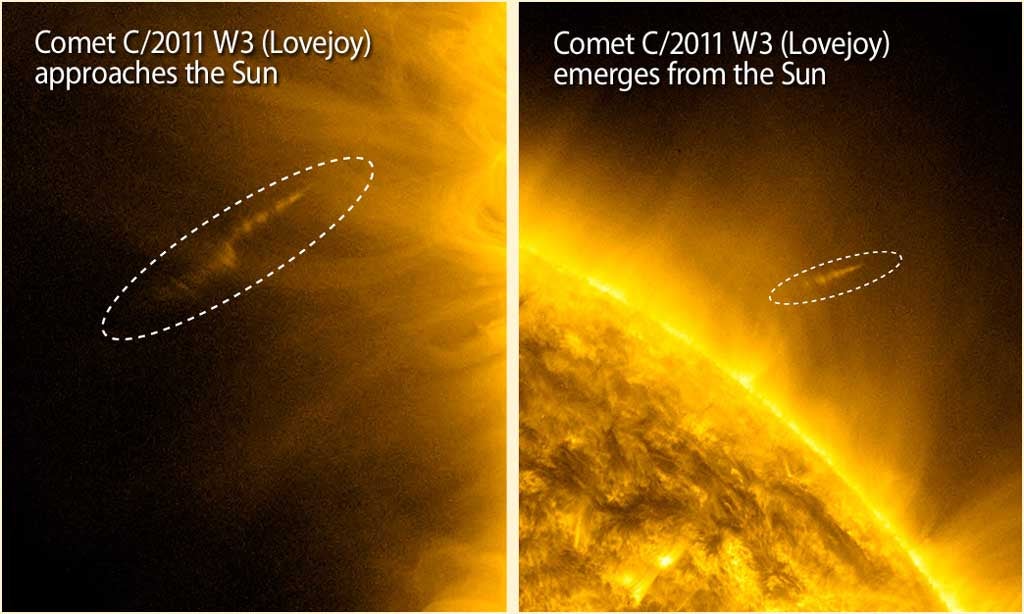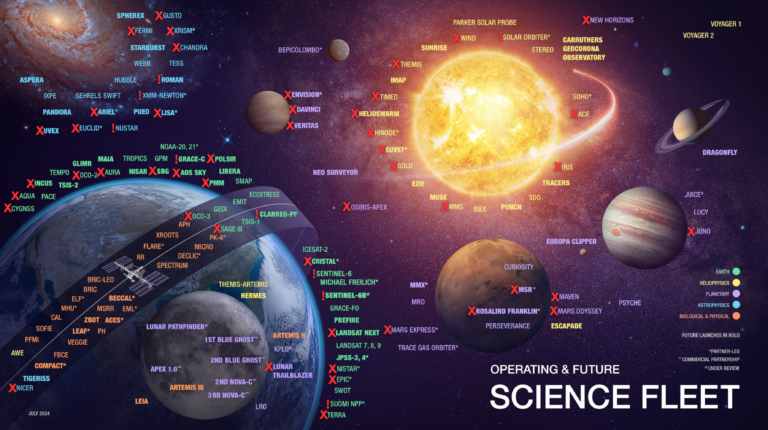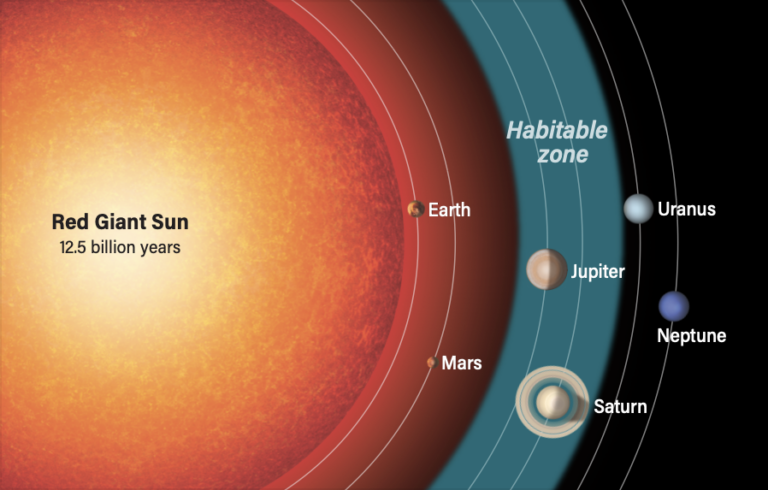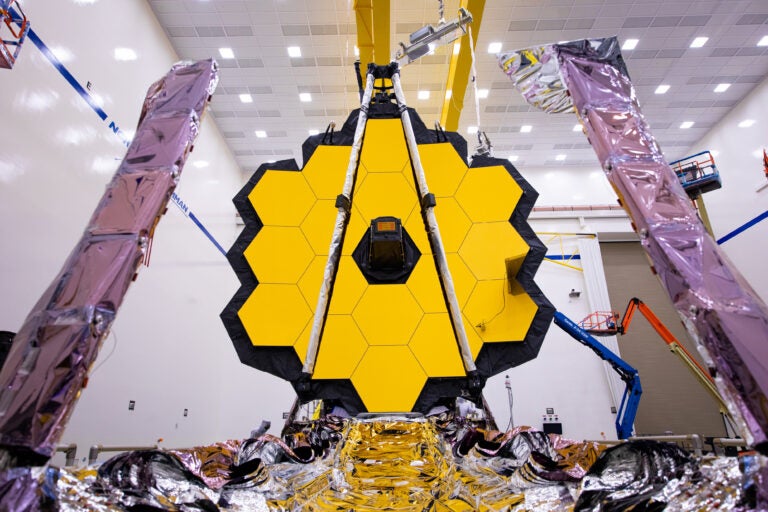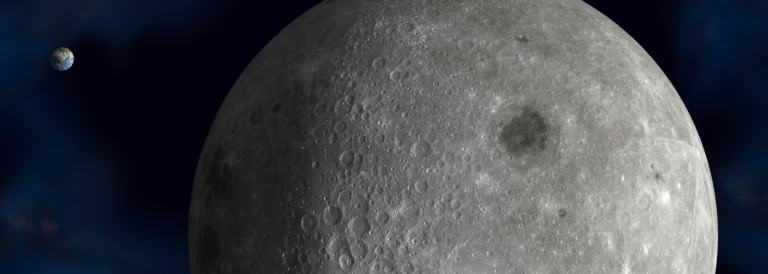Any of these impacts, however, is unlikely. For a comet or asteroid to reach the photosphere, it must first traverse the Sun’s increasingly hot and dense atmosphere. The extremely high temperatures (thousands of degrees) so near our star would force components of a comet or asteroid to turn directly to gas. As the object penetrated farther into the solar atmosphere, denser gaseous material would ablate the rock. Thus, as a comet or asteroid approached the Sun, it would lose mass quickly and might not even survive long enough to hit the photosphere.
Finally, because everything in our solar system normally orbits the Sun without hitting it, any object from the solar system on a path to impact our star would have interacted with another body to change its orbit that much. Or, the impacting object could be a body ejected from another planetary system. — Matthew Knight, Lowell Observatory, Flagstaff, Arizona

